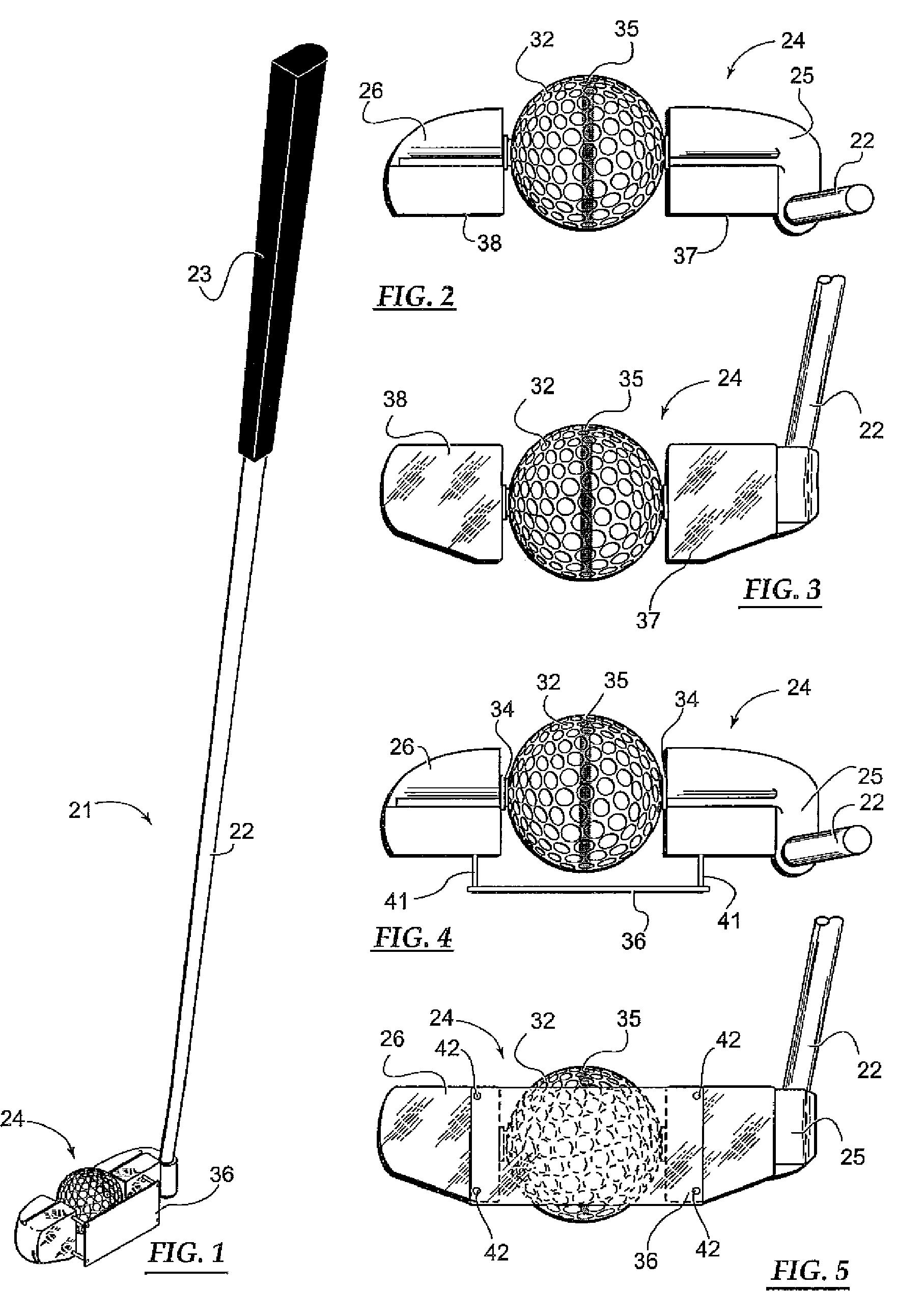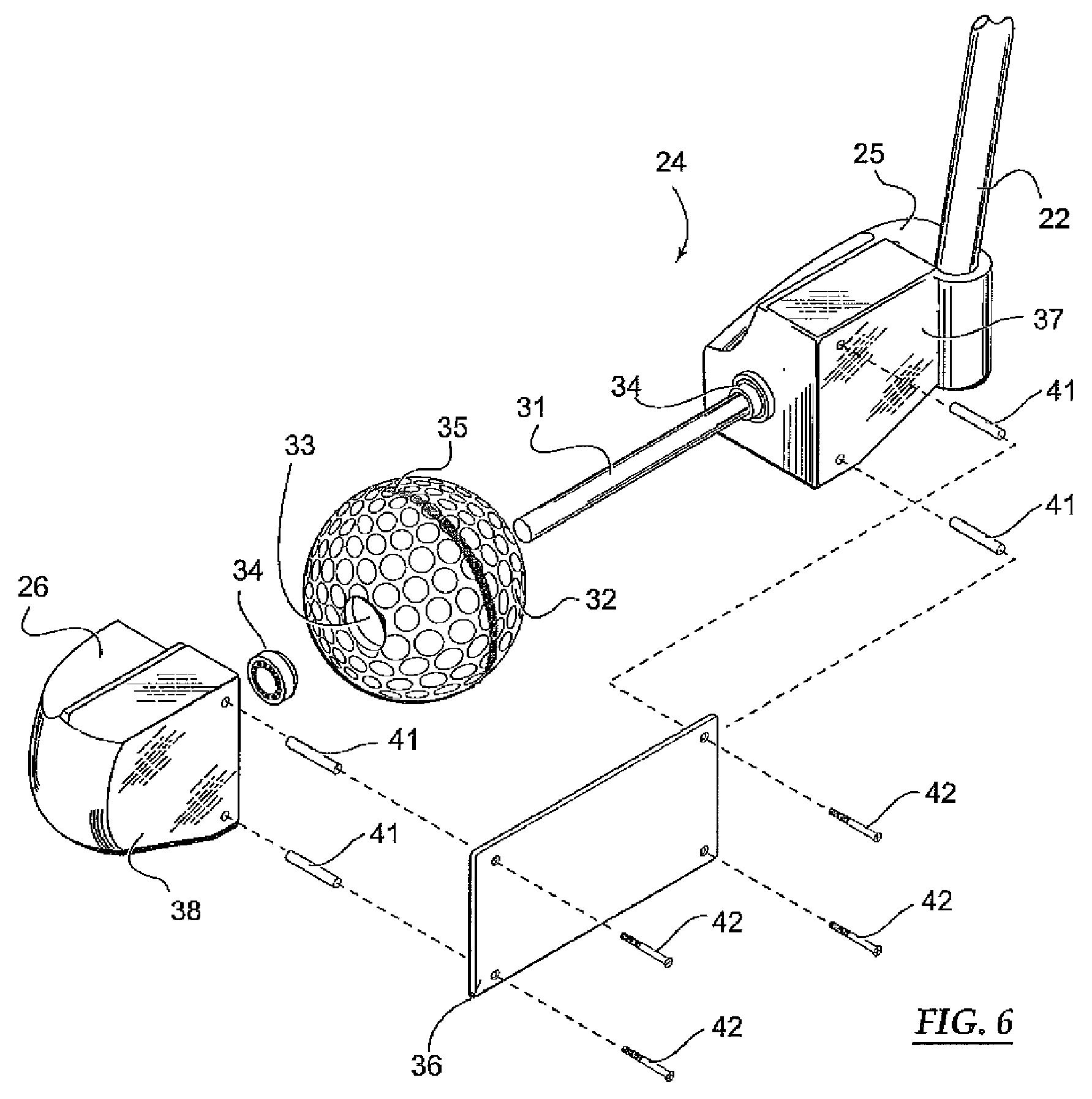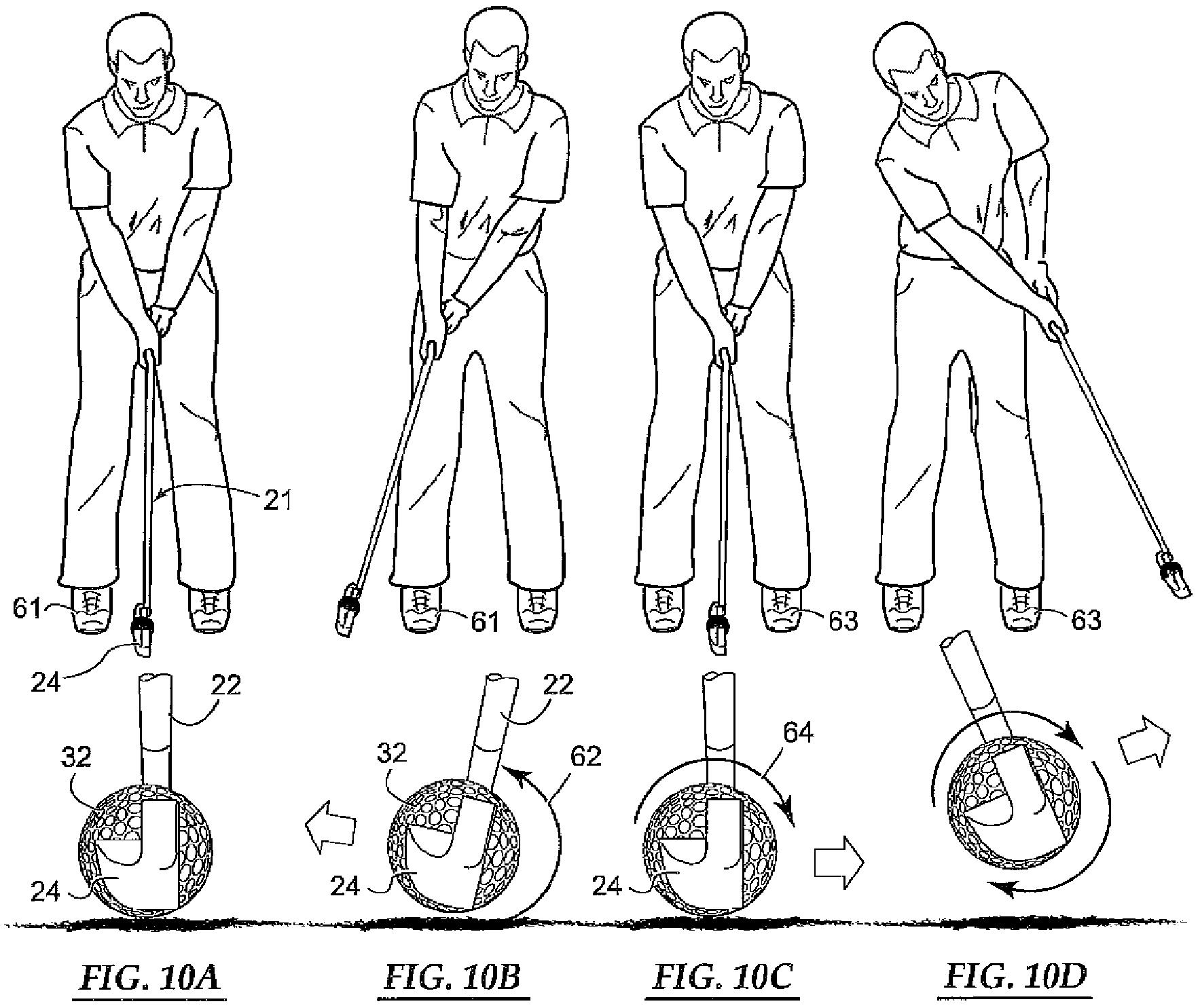A Practice Putter That Looks Pretty Good
An interesting patent application published this week directed to a training putter. At first I thought it looked crazy, but the more I read about it the more I started to think that it might be a pretty good idea. The application published as US Pub. No. 20080305880 titled “Golf Swing and Putting Stroke Training Device and Method.” Check out this practice putter design:



The application explains:
[0037] For short putts, generally in the range of about ten feet or shorter, ball 32 never comes off the ground during a proper putting stroke. Ball 32, with circumferential line 35 being clearly visible and aligned in the direction of the intended putt, rolls smoothly in the backstroke and through the forward stroke. By training the putting stroke in this manner with the device of this invention, a proper putting stroke will be established. For longer putts, ball 32 will be raised off the ground during the backswing (FIG. 10) and will be raised off the ground during the follow through (FIG. 10D). Again, with a proper stroke, keeping the face 27 perpendicular to the intended line, ball 32 will rotate freely after head 24 passes the contact area at the position shown in FIG. 10C, through to the position shown in FIG. 10D.
[0038] After training with the FIGS. 2 and 3 embodiment, or as an alternative to the FIGS. 2 and 3 embodiment, the embodiment of FIGS. 1, 4, and 5 may be employed. By having contact plate 36, putter 21 may be used for training by contacting an actual golf ball. The stroke principles outlined above with respect to the FIGS. 2 and 3 embodiment enables the person being trained to hit actual putts and get a feel for keeping the putter head low while observing the results of contacting a freely movable ball on a green.
[0039] Ball 32 is mounted in about the center of head 24 in order to be at the location of what would have been the center of percussion, or “sweet spot,” in order to create the proper “feel” when in use. The ball is mounted so as to project below the bottom edge of face 27 by approximately 0.125 to 0.25 inch so that the bottom front edge of the face does not engage the ground during the backswing. The distance ball 32 extends below the bottom of head 24 may be somewhat less than 0.125 inch, and can be greater than 0.25 inch. In order for plate 36 to clear the ground, somewhat greater than 0.25 inch may be necessary for the ball to project below the bottom of head 24.
[0040] The principles of use described above apply equally to the embodiment of FIGS. 7-9. This long-shafted putter is intended to be employed in a manner that head 46 is aligned parallel to the ground at address (FIG. 9) and stays parallel to the ground throughout the putting stroke. Balls 45 are individually rotatable and should rotate equally during the putting stroke. If the head strays off the perpendicular orientation to the intended line of the putt, balls 45 will rotate differently, or will not rotate freely if the putter head is twisted during the putting stroke in a manner that turns face 51 so it is off line and not perpendicular to the intended line.
Great golf invention!
Dave Dawsey – Watching Golf Putter Inventions
PS – check out additional putter patents HERE
